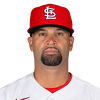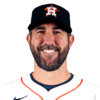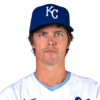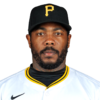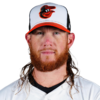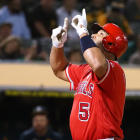Major League Baseball, like many sports leagues around the world, has been shut down indefinitely because of the growing threat that is the novel coronavirus (COVID-19). Spring training was suspended and Opening Day has been pushed back to at least mid-May, and that remains subject to change as the situation develops.
Commissioner Rob Manfred remains hopeful we will have baseball at some point in 2020 -- if nothing else, MLB will want to play games to make money, even if the stands have to be empty -- though it remains to be seen when the season will begin. The longer the shutdown, the less likely it is we have a respectable season consistent with historical standards. What can baseball do about it? Nothing, really.
Baseball will return at some point and the sport will live on. For players though, their careers do not continue indefinitely, and they'll never get back the games they are losing to the shutdown. That could lead to several players missing out on historical milestones that are currently within reach.
Here are eight players approaching historic milestones who may have a tough time getting there following the shutdown.
Albert Pujols: 700 doubles and 700 home runs
Clearly, Pujols is going to the Hall of Fame. He could've retired five years ago and been a first-ballot Hall of Famer. He's a career .300/.379/.549 hitter with over 3,200 hits and 2,000 RBI. Baseball Reference has him as one of only 32 players in history to amass at least 100 WAR. Pujols doesn't need 700 doubles or 700 homers to get into Cooperstown. He's there already.
That said, 700 doubles and 700 home runs are major milestones. Only four players have 700 doubles and only three have 700 home runs, and a) they're basically the seven greatest hitters who ever lived, and b) no one has done both. Pujols has a legitimate chance to be the first 700/700 player in baseball history.
Here are the all-time doubles and home runs leaderboards:
| Doubles | Home Runs |
|---|---|
1. Tris Speaker: 793 | 1. Barry Bonds: 762 |
2. Pete Rose: 746 | 2. Hank Aaron: 755 |
3. Stan Musial: 725 | 3. Babe Ruth: 714 |
4. Ty Cobb: 724 | 4. Alex Rodriguez: 696 |
5. Craig Biggio: 668 | 5. Willie Mays: 660 |
6. George Brett: 665 | 6. Albert Pujols: 656 |
7. Albert Pujols: 661 | 7. Ken Griffey Jr.: 630 |
Pujols turned 40 in January and he is under contract through 2021, and it's hard to see him playing in 2022, either because he retires or because teams won't sign him. Over the last three seasons he averaged 20 doubles and 22 homers per year. Continuing at that pace the next two seasons would leave him with 701 doubles and 700 homers at the end of 2021. Close!
Playing a full season in 2020 is increasingly unlikely given the shutdown, however, and fewer games makes it less likely Pujols can go 700/700. Also, maintaining his age 37-39 doubles and homers pace during his age 40-41 seasons won't be easy. Pujols is already well into his decline phase. His performance could slip even more going forward.
Getting to 700 doubles and 700 homers, or even just one of the two milestones rather than both, was going to be difficult even with a full 2020 season. Now that it may be shortened, Pujols may have no chance at becoming baseball's first 700/700 player.
Justin Verlander: 300 wins
Is the 300-game winner truly a thing of the past? Or is that just something broadcasters like to say because it's difficult to see another 300-game winner in a near future? I think it's the latter, honestly. Pitcher usage is changing, cutting into win totals, but outliers still exist, and pitchers always needed to be outliers to win 300 games. Verlander is very much an outlier.
Verlander, who turned 37 last month, has the best chance at 300 career wins among active pitchers. He will go into 2020 with 225 wins, so he's 75 away. He's still excellent, which is obviously important. He also plays for a great Astros team, which will help him rack up wins, and he says he wants to pitch until he's 45. Here's what Verlander told the Detroit Free Press' Chris Nelson in 2018:
"I'm taking the proper steps to prepare myself to pitch ... hopefully until 45," he said Thursday at the Astros' spring training facility.
"Looking at the long term, you can start making adjustments now to prepare. The steps I've gone through the last four, five years to transform my body and get back to being healthy, (those) are going to allow me to, knock on wood, stay healthy and thrive late in my 30s, early 40s."
Saying you want to play until you're 45 and actually playing until you're 45 are very different things. Ichiro Suzuki wanted to play until he was 50, then his body (and teams) told him he was done at 45. Verlander needs to stay healthy to get to 300 wins, and while he's been supremely durable throughout his career, this spring's groin and lat injuries remind us Father Time is undefeated.
Fortunately for Verlander, he doesn't need to play until he's 45 to get to 300 wins, though it would increase his chances. He won 21 games in 2019 and at least 15 games every year from 2016-19. Fifteen wins a year gets Verlander to 300 wins in five years, at the end of his age-41 season in 2024. Bartolo Colon, R.A. Dickey, and Andy Pettitte all pitched into their 40s in recent years.
Verlander signed a two-year extension last spring and is under contract through 2021. If he's still effective, it stands to reason he'll get another contact at the point, either with the Astros or another team. Getting those last 75 wins in four seasons rather than five is possible, though the shutdown makes it very unlikely. It all but ensures Verlander will have to pitch well into his 40s to get there.
Robinson Cano: 3,000 hits
There's a very good chance 2018's performance-enhancing drug suspension will keep Cano, who is eighth all-time in WAR among second basemen, out of the Hall of Fame. He made his bed and he'll have to lay in it, but the raw career numbers are Cooperstown worthy. Cano is a career .302/.352/.490 hitter with nearly 600 doubles and over 300 homers.
Cano will play the entire 2020 season at age 37 and he will begin the year with 2,570 career hits. He is 430 hits away from joining the hallowed 3,000-hit club. Cano is under contract through 2023, so as long as he averages 108 hits per year during the duration of the contract, he'll get to 3,000 hits. This is a guy who averaged 168 hits per 150 games the last five seasons.
There are a few obstacles standing in Cano's way, however. First, there's the shutdown, which will presumably cost him games in 2020. At his age, it is likely he will perform a little worse (potentially a lot worse) each year moving forward. Cano will have up pick up most of those 430 hits at age 38 and beyond, and that's not easy. Baseball is hard when you're approaching 40.
Secondly, injuries have become more of an issue the last two years. Cano broke his hand right before the suspension in 2018 and last season quad and hamstring injuries limited him to 107 games. And third, age-related decline is beginning to set in. Last season was Cano's worst season in more than a decade (.256/.307/.428). That's a bad sign at his age.
Also, the Mets are very much trying to contend, and they already have a better second baseman on the roster (Jeff McNeil, who is slated to play third in deference to Cano) and several quality middle infield prospects coming up through the farm system (Ronny Mauricio and Andres Gimenez). Cano losing playing time if he doesn't perform is a distinct possibility.
There are four years remaining on Cano's contract and 2020 was going to be his best opportunity to pile up hits. He's healthy and he's not getting any younger, and he's locked into a lineup spot. Who knows what 2021 will bring? The shutdown will potentially cost Cano some number of games and lower his chances of joining the 3,000-hit club. He can still get there, but it'll be more difficult now.
Miguel Cabrera: 2,000 RBI
Cabrera, like Pujols, could've hung up his spikes a few years and been a first ballot Hall of Famer. He's under contract through 2023 and, even with the shutdown, he has a very good chance to join the 3,000-hit and 500-homer clubs soon. Cabrera is currently sitting on 2,815 hits and 477 homers. Another 185 hits and 23 homers and it's done. He should get there at some point in 2021.
While 3,000 hits and 500 homers are obviously historic milestones -- only six players have done both (Pujols, Hank Aaron, Willie Mays, Eddie Murray, Rafael Palmeiro, Alex Rodriguez) -- Cabrera is also closing in on 2,000 career runs batted in, which is much more exclusive club. Only four players in history have officially reached 2,000 RBI:
- Hank Aaron: 2,297
- Babe Ruth: 2,213
- Alex Rodriguez: 2,086
- Albert Pujols: 2,075
Cabrera is 29th all-time with 1,694 RBI, leaving him 306 RBI short of the milestone. In his prime, he was an RBI machine, averaging 119 RBI per season from 2004-14. As age and injuries have cut into his production in recent years, Cabrera has seen his season RBI totals dwindle to 76, 108, 60, 22, and 59 the last five years. It works out to 84 RBI per 150 games played.
From 2004-14, Cabrera averaged 157 games per season and was among the game's most durable players. Injuries have slowed him in recent years though -- Miggy has played 581 of 810 possible games the last five seasons, or 72 percent -- and with his 37th birthday looming next month, staying healthy and productive will continue to be a challenge going forward.
There's also this: RBI is a team dependent stat. Cabrera remains a god with runners in scoring position (.369/.427/.459 in 2019) but the rest of the Tigers must get on base for him, and Detroit had a team .294 on-base percentage last year. They're early in a rebuild with a system short on high-end position player prospects (their strength is pitching). The lineup around Cabrera just isn't good.
With a full 2020 season, Cabrera would need to average 77 RBI per year to get to 2,000 before his contract expires. A challenge given his age and supporting cast? Yes. Doable? For sure. The shutdown taking away games in 2020 could put 2,000 RBI out of reach entirely. Cabrera doesn't need the milestone to get to the Hall of Fame, but it would've been quite an accomplishment.
Zack Greinke: 250 wins and 3,000 strikeouts
Greinke deserves more attention as a future Hall of Fame candidate. Sixteen years into his career he is 205-123 with a 3.35 ERA -- that 25 percent better than league average -- and 2,622 strikeouts in 2,872 career innings. Hall of Famer Mike Mussina was 239-134 with 2,572 strikeouts and an ERA that was 24 percent better than average at the same point in his career.
The 2020 season will be Greinke's age 36 season and he's currently 45 wins short of 250 and 378 strikeouts short of 2,500. Only 14 pitchers in history have 250 wins and 3,000 strikeouts. Twelve are in the Hall of Fame, one is recently retired (CC Sabathia), and the other is Roger Clemens, who has a no-doubt Hall of Fame resume but is persona non grata.
Greinke has been remarkably durable throughout his career -- he's thrown at least 200 innings in nine of the last 12 seasons -- and he is under contract through 2021, so he has that going for him. He doesn't have to worry about a roster spot anytime soon. Being on a very good Astros team with Verlander will help too. Picking up wins figures to be a little easier than it would elsewhere.
Unless he has a crazy great season, Greinke is currently three years away from 250 wins and 3,000 strikeouts. Maybe only two years on the strikeouts, but very likely three years away on wins. With each passing day, it is more and more likely the shutdown will shorten the 2020 season, so Greinke may have to play into 2022, his age 38 season, to reach the milestones.
Could he do that? Sure. Greinke is a pitching savant who succeeds with smarts rather than overwhelming stuff, and, in theory, that will help him remain effective into his late 30s. He has to stay healthy though, which always uncertain for a pitcher on the wrong side of 35 with this many innings on his arm. A full 2020 would've given Greinke a much better chance at the 250/3,000 club.
Aroldis Chapman, Kenley Jansen, Craig Kimbrel: 500 saves
The all-time saves leaderboard is an interesting one. Mariano Rivera and Trevor Hoffman both have over 600 saves and no one else has even 500 saves. Only four others have at least 400 saves, and then 24 pitchers have between 300-399 saves. Getting to 300 saves is the (relatively) easy part. Getting to 400 is much more difficult. Five-hundred (and 600) is damn near impossible.
Here is the all-time saves leaderboard, for posterity:
- Mariano Rivera: 652
- Trevor Hoffman: 601
- Lee Smith: 478
- Francisco Rodriguez: 437
- John Franco: 424
- Billy Wagner: 422
Kimbrel, 31, is 13th all-time with 346 saves. Jansen, 32, has 301 saves and Chapman, also 32, has 273. Think how good Chapman has been throughout his career. He owns a 2.23 ERA with a career 14.8 K/9 in parts of 10 MLB seasons, and he is still only a little more than halfway to 500 saves. Closer is a position without much longevity.
Kimbrel averaged 37 saves per year from 2015-18 and he is currently 154 saves away from 500. He's more than four years away at his 2015-18 pace, and Kimbrel showed signs of decline in 2018, and even more in 2019 (plus he lost half a season because he signed late). He'll have to avoid further decline to have a shot at 500 saves, shutdown or no shutdown.
Chapman and Jansen have an even more uphill climb. They're a year older than Kimbrel and further away from 500 saves. Jansen had his worst season in 2019 and is more than five 35-save seasons short of 500. To date, Chapman has aged more gracefully than Kimbrel or Jansen -- he was as good as ever in 2019 -- but is nearly seven 35-save seasons away from 500 career saves.
Beyond the shutdown, these three must also overcome the general volatility of the closer position -- go back to 2017 and the saves leaderboard is almost unrecognizable (Alex Colome and Greg Holland were first and second in saves) -- and the fact teams are being more creative with their bullpens. They're using co-closers and their best relievers as setup men, among other things.
Given their ages and how many saves they need and how difficult it is remain an effective reliever, Chapman, Jansen, and Kimbrel were going to have a difficult time getting to 500 saves even with a full 2020 season. Losing games to the shutdown will make it that much more difficult, and maybe even impossible. Rivera and Hoffman may remain the only members of the 500-save club for the foreseeable future.
Other notable upcoming milestones: Elvis Andrus: 400 steals (currently 302); Nelson Cruz: 500 homers (currently 401); Edwin Encarnacion: 500 homers (currently 414); Cole Hamels: 200 wins (currently 163); Jon Lester: 3,000 strikeouts (currently 2,355); Nick Markakis: 3,000 hits (current 2,355); Joey Votto: 500 doubles (currently 404)



